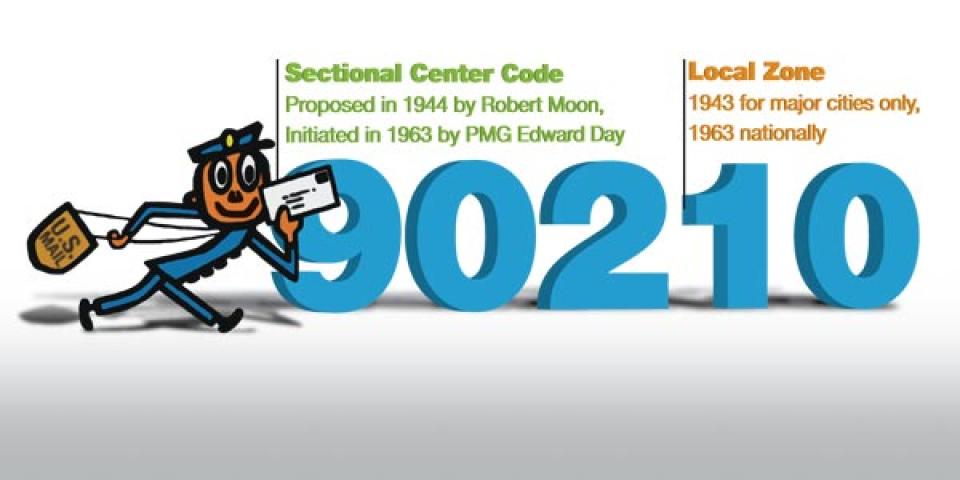The Untold Story of the ZIP Code
April 1, 2013 (Report Number RARC-WP-13-006)
In 1963 the Post Office Department introduced the Zone Improvement Plan (ZIP) Code as a means to allow mail sorting methods to become faster and eventually be automated, but the innovation also created unimagined socio-economic benefits as an organizing and enabling device. The ZIP Code is a support structure used by a variety of industries, including the insurance and real estate industries, and also fosters community and identity representation. These enormous societal benefits are obtained through the initial creation of the ZIP Code and the Postal Service’s maintenance and updates to this asset. This paper examines further enhancements to strengthen the ZIP Code for the digital age.
In particular, this paper explores the benefits of combining the precision of geocodes within the contextual, broad usage of ZIP Codes. Enhancing ZIP Codes with geocodes could facilitate delivery route reconfigurations, link the wealth of Postal Service addresses information to mapping software, and assist in the alignment of government investments to serve public needs. Another enhancement examined is linking demographic information with the ZIP Code. This could be combined with smaller mailing groupings to increase the value of the mail for senders and recipients.
The paper also examines the ZIP Code’s history to identify any lessons which could be applied today. This exploration reveals the ZIP Code’s unanticipated external benefits occurred because the Post Office Department took initiative and experimented with a series of steps to ensure the innovation’s adoption and success. The Post Office Department created the Mr. ZIP campaign which increased public awareness of the initiative and could be credited with the ZIP Code’s acceptance in the face of some stakeholder resistance.
Lastly, the Office of Inspector General, working with IBM, embarked on an approach to quantify the value of the ZIP Code system to society. The estimate shows that the ZIP Code adds about $10 billion annually to the economy. This estimate also illustrates that the ZIP Code’s value to external firms exceeds the internal value to the Postal Service.

